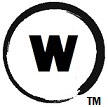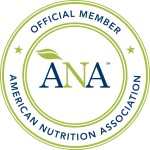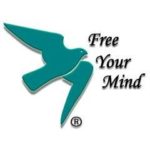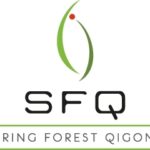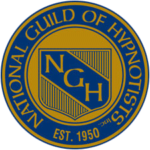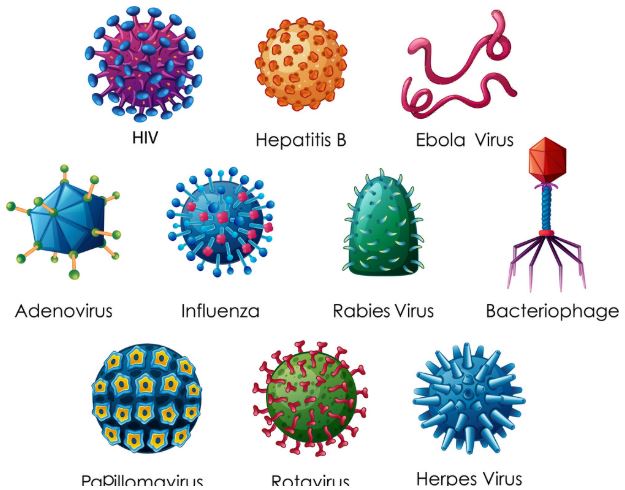
The information below is shared for educational purposes and to promote research.
Integrative Interventions with Antiviral Properties from Life Extension
Given the suspected role of herpes virus reactivation in some cases of Bell’s palsy (Kennedy 2010), natural agents shown to combat viral infection may be of some benefit for those affected by Bell’s palsy, although clinical trials have yet to evaluate this hypothesis.
Licorice
Licorice is a member of the Glycyrrhiza species, which has been used traditionally to combat viral infections. It contains a compound called glycyrrhizin that has been shown in several studies to exert antiviral activity against a number of viruses, including herpes virus (Fiore 2008; Pompei 1979). In fact, the broad antiviral activity of licorice has given rise to interest in its clinical application as a broad-spectrum antiviral (Pu 2013). Animal studies show that licorice compounds mitigate the impact of HSV-1 infection and reduce HSV-1 viral replication (Sekizawa 2001).
Zinc
Zinc may be able to combat Bell’s palsy on a number of fronts. Zinc inhibits the replication of the herpes virus and has been used in multiple trials to reduce the duration of herpes outbreaks (Gaby 2006). Zinc is also important for nerve function, as zinc deficiency can impair the ability of nerves to transmit signals (O’Dell 1990; NINDS 2012).
Lysine
Lysine is an amino acid sometimes used to treat recurrent herpes simplex infections (Flodin 1997). It has not been formally evaluated in the context of Bell’s palsy, but studies have found it to be useful in combatting herpes virus-related illnesses. A double-blind, placebo-controlled study that included participants with oral-facial or genital herpes found that consumption of one gram of L-lysine three times daily for 6 months reduced the frequency, duration, and severity of herpes outbreaks (Griffith 1987). Other studies have also found that lysine supplementation can reduce the frequency of cold sores that occur during HSV-1 infection (Ozden 2011). Overall, lysine appears to be able to reduce the intensity and frequency of HSV flare-ups when used regularly (EBSCO CAM Review Board 2011).
Reishi Mushroom
The reishi mushroom, also known as Ganoderma lucidum, is a fungus that has been used medicinally for centuries in China, Japan, and Korea. Some of the components of reishi appear to have antiviral properties (Paterson 2006). Researchers have identified two different compounds in the reishi mushroom, known as GLPG (Ganoderma lucidum proteoglycan) and APBP (acidic protein bound polysaccharide), which showed strong antiviral activities against both HSV-1 and HSV-2 in vitro (Liu 2004; Li 2005; Kim 2000).
Preparations of the reishi mushroom have also shown promising results in human trials. Reishi was very effective in reducing pain caused by herpes and shingles infections that did not respond to standard treatment. Also, an herbal mixture containing reishi reduced shingles pain. In addition, another reishi-containing herbal mixture shortened the duration of symptoms in patients with oral and genital herpes infections (Hijikata 1998; Hijikata 2005; Hijikata 2007).
Much of reishi’s benefit may be due to its ability to combat immunosenescence – the normal decline of the immune system that accompanies aging. Reishi mushrooms attack and reverse immunosenescence through the combined effects of three compounds: first, a group of long-chain carbohydrates called polysaccharides; second, a unique protein named LZ-8; and third, a small group of steroid-like molecules called triterpenes (Bao 2001; Xu 2011; Yeh 2010).
Together, these three reishi components achieve the dual goals of promoting healthy immune responses against viral, bacterial, or fungal infections, while suppressing excessive or chronic inflammation that threatens long-term health.
Among its broad-spectrum immune-boosting effects are the following:
- Reishi promotes specialization of dendritic cells and macrophages. These cells are essential in allowing individuals to react to new threats, vaccines, and cancer cells (Cao 2002; Lai 2010; Jan 2011; Ji 2011; Chan 2005).
- Reishi’s effects on dendritic cells have been proven to boost the response to tetanus vaccine. The mushroom’s proteins are also under investigation as “adjuvants” to emerging cancer DNA vaccines and other immune-based cancer treatments (Lai 2010; Chu 2011; Lin 2011; Zhu 2012).
- Reishi polysaccharide triggers growth and development of bone marrow, where most immune cells are born. Following bone marrow eradication by chemotherapy, reishi increased production of both red and white blood cells (Zhu 2007).
- Reishi increases numbers and functions of many cell lines in the immune system, such as natural killer cells, antibody-producing B cells, and the T cells responsible for rapid response to a new or “remembered” antigen (Jan 2011; Wang 2012; Jeurink 2008).
On the other side of the immunosenescence coin, reishi’s various components work to suppress inflammatory cytokines produced during chronic inflammation, as seen for example in rheumatoid arthritis, while maintaining normal acute inflammatory responses (Ji 2011; Kohda 1985; Ho 2007; Ko 2008; Xi Bao 2006). Under conditions of chronic inflammation, reishi reduces inflammatory promoters (Dudhgaonkar 2009).
Lemon Balm
Lemon balm (Melissa officinalis) is a form of mint used traditionally to treat numerous ailments, including herpes outbreaks (Yarnell 2009). Several laboratory experiments have shown lemon balm extracts possess a variety of antiviral activities against both HSV-1 and HSV-2 (Mazzanti 2008; Astani 2012; Schnitzler 2008; Geuenich 2008; Nolkemper 2006; Allahverdiyev 2004; Dimitrova 1993). Clinical trials have evaluated the efficacy of topical lemon balm preparations and shown positive results. In one trial, a lemon balm ointment improved symptoms of oral herpes compared to placebo when applied 4 times daily for 5 days; the lemon balm treatment also prevented the spread of the outbreak, and the authors suggested that lemon balm may increase the time between outbreaks (Koytchev 1999). Two additional trials involving 115 and 116 patients also found that local therapy with lemon balm extract effectively eases oral herpes symptoms (Wolbling 1994).
Propolis
Propolis is a resin-like substance obtained from beehives and has a long history of medicinal use (Natural Medicines Comprehensive Database 2012). It contains a mixture of several compounds, including flavonoids and polyphenols, many of which have anti-HSV-1 activity (Schnitzler 2010). The variety of effects that it has on the immune system, together with its anti-inflammatory properties, may allow it to help the body more effectively fight infections (Storcin 2007).
In one study, a constituent of propolis was found to significantly inhibit the synthesis of HSV in cell cultures (Amoros 1994). Another study showed that a propolis extract has potent antiviral activity against HSV-2 in cell cultures (Nolkemper 2010). Notably, an ointment containing flavonoids from propolis was more effective in aiding the healing of genital herpes lesions and reducing local symptoms than the antiviral medication acyclovir (Vynograd 2000). Propolis, as a 3% ointment, was also shown to reduce the duration of cold sores caused by oral herpes and decreased pain associated with the lesions (Ehrlic 2011).
A number of other integrative interventions shown to possess antiviral properties are presented in the Herpes and Shingles protocol.
Source of the text above: https://www.lifeextension.com/Protocols/Neurological/Bells-Palsy/Page-03?p=1
References:
A.D.A.M. MedlinePlus web page. Facial paralysis. Available at: http://www.nlm.nih.gov/medlineplus/ency/article/003028.htm. Last updated 1/5/2013. Accessed 5/5/2014.
Alayat MS, Elsodany AM, El Fiky AA. Efficacy of high and low level laser therapy in the treatment of Bell’s palsy: a randomized double blind placebo-controlled trial. Lasers in medical science. Jan 2014;29(1):335-342.
Allahverdiyev A, Duran N, Ozguven M, Koltas S. Antiviral activity of the volatile oils of Melissa officinalis L. against Herpes simplex virus type-2. Phytomedicine : international journal of phytotherapy and phytopharmacology. Nov 2004;11(7-8):657-661.
Amoros M, Lurton E et al. Comparison of the Anti-Herpes Simplex Virus Activities of Propolis and 3-Methyl-But-2-Enyl Caffeate. Journal of Natural Products, 1994; 57(5): 644-647.
Astani A, Reichling J, Schnitzler P. Melissa officinalis extract inhibits attachment of herpes simplex virus in vitro. Chemotherapy. 2012;58(1):70-77.
Barbara M, Antonini G et al. Role of Kabat physical rehabilitation in Bell’s palsy: A randomized trial. Acta Oto-Laryngologica, 2010; 130: 167-172.
Basic-Kes V, Dobrota VD, Cesarik M, Matovina LZ, Madzar Z, Zavoreo I, Demarin V. Peripheral facial weakness (Bell’s palsy). Acta clinica Croatica. Jun 2013;52(2):195-202.
Bao X, Liu C, Fang J, Li X. Structural and immunological studies of a major polysaccharide from spores of Ganoderma lucidum (Fr.) Karst. Carbohydrate research. May 8 2001;332(1):67-74.
Baugh RF, Basura GJ et al. Clinical Practice Guideline: Bell’s Palsy. Otolaryngology — Head and Neck Surgery. 2013; 149: S1. The Cochrane Library, 2010; 8.
Bazan NG. Omega-3 fatty acids, pro-inflammatory signaling and neuroprotection. Curr Opin Clin Nutr Metab Care. 2007; 10(2):136–141.
Beurskens CHG and Heymans PG. Mime therapy improves facial symmetry in people with long-term facial nerve paresis: A randomised controlled trial. Australian Journal of Physiotherapy, 2006; 52(3): 177-183.
Calder PC. N-3 Polyunsaturated fatty acids, inflammation, and inflammatory
Diseases. American Journal of Clinical Nutrition, 2006; 83: 150: 5-19s.
Calder PC. Polyunsaturated fatty acids, inflammatory processes and inflammatory bowel diseases. Mol Nutr Food Res. 2008;52:885-97.
Cao LZ, Lin ZB. Regulation on maturation and function of dendritic cells by Ganoderma lucidum polysaccharides. Immunology letters. Oct 1 2002;83(3):163-169.
Chan WK, Lam DT, Law HK, Wong WT, Koo MW, Lau AS, . . . Chan GC. Ganoderma lucidum mycelium and spore extracts as natural adjuvants for immunotherapy. Journal of alternative and complementary medicine (New York, N.Y.). Dec 2005;11(6):1047-1057.
Chen N, Zhou M et al. Acupuncture for Bell’s Palsy. Copyright © 2010. The Cochrane Collaboration. Published by Wiley & Sons, Ltd.
Chu CL, Chen Dz C, Lin CC. A novel adjuvant Ling Zhi-8 for cancer DNA vaccines. Human vaccines. Nov 2011;7(11):1161-1164.
Clement WA and White A. Idiopathic Familial Facial Nerve Paralysis. The Journal of Laryngology and Otology, 2000; 114: 132-134.
Colombo F, Marques AMC et al. The effect of the photobiomodulation in the treatment of Bell’s palsy: clinical experience. Proc. SPIE 8211, Mechanisms for Low-Light Therapy VII, 82110Q (March 8, 2012).
Cumberworth A, Mabvuure NT et al. Is acupuncture beneficial in the treatment of Bell’s palsy? Best Evidence Topic (BET). International Journal of Surgery, 2012; 10: 310-312.
Desanto LW and Schubert HA. Bell’s Palsy. Archives of Otolaryngology, 1969; 89: 42-44.
Dimitrova Z, Dimov B, Manolova N, Pancheva S, Ilieva D, Shishkov S. Antiherpes effect of Melissa officinalis L. extracts. Acta microbiologica Bulgarica. 1993;29:65-72.
Dudhgaonkar S, Thyagarajan A, Sliva D. Suppression of the inflammatory response by triterpenes isolated from the mushroom Ganoderma lucidum. International immunopharmacology. Oct 2009;9(11):1272-1280.
EBSCO CAM Review Board “Lysine.” NYU Langone Medical Center. NYU, June 2011. Web. 03 Jan. 2013. <http://www.med.nyu.edu/content?ChunkIID=21791>.
Ehrlic S. “Herpes Simplex Virus.” University of Maryland Medical Center. University of Maryland, 29 Sept. 2011. Web. 02 Jan. 2013. <http://www.umm.edu/altmed/articles/herpes-simplex-000079.htm>.
Fahimi J, Navi BB, Kamel H. Potential Misdiagnoses of Bell’s Palsy in the Emergency Department. Annals of emergency medicine. Jul 25 2013.
Ferri, FF. Ferri’s Clinical Advisor. “Bell’s Palsy” p155-156. 2014.
Fiore C, Eisenhut M, Krausse R, Ragazzi E, Pellati D, Armanini D, Bielenberg J. Antiviral effects of Glycyrrhiza species. Phytotherapy research : PTR. Feb 2008;22(2):141-148.
Flatters SJL, Xiao W-H et al. Acetyl-l-carnitine prevents and reduces paclitaxel-induced painful peripheral neuropathy. Neuroscience Letters 397 (2006) 219–223.
Flodin NW. The metabolic roles, pharmacology, and toxicology of lysine. Journal of the American College of Nutrition. Feb 1997;16(1):7-21.
Fontana CR and Bagnato VS. Low-Level Laser Therapy in Pediatric Bell’s Palsy: Case Report in a Three-Year-Old Child. The Journal of Alternative and Complementary Medicine, 2013; 19(4): 376-382.
Gaby AR. Natural Remedies for Herpes simplex. Alternative Medicine Review, 2006; 11(2): 93-101.
Gantz BJ, Fisch U. Modified transotic approach to the cerebellopontile angle. Archives of otolaryngology (Chicago, Ill.: 1960). Apr 1983;109(4):252-256.
Geuenich S, Goffinet C, Venzke S, Nolkemper S, Baumann I, Plinkert P, . . . Keppler OT. Aqueous extracts from peppermint, sage and lemon balm leaves display potent anti-HIV-1 activity by increasing the virion density. Retrovirology. 2008;5:27.
Gilden DH. Bell’s Palsy. New England Journal of Medicine, 2004; 351:1323-31.
Griffith RS, Walsh DE, et al. Success of L-Lysine Therapy in Frequently Recurrent Herpes Simplex Infection. Dermatologica. 1987;175:183-190.
Gronseth GS and Paduga R. Evidence-based guideline update: Steroids and antivirals for Bell palsy: Report of the Guideline Development Subcommittee of the American Academy of Neurology. Neurology. 2012;79:1-5.
Hageman G, Ippel PF et al. Familial, Alternating Bell’s Palsy with Dominant Inheritance. European Neurology, 1990; 30: 310-313.
Hijikata Y and Yamada S. Effect of Ganoderma Lucidum on Postherpetic Neuralgia. American Journal of Chinese Medicine, 1998; 26: 375.
Hijikata Y, Yamada S et al. Herbal Mixtures Containing the Mushroom Ganoderma Lucidum Improve Recovery Time in Patients with Herpes Genitalis and Labialis. The Journal of Alternative and Complementary Medicine, 2007; 13(9): 985-987.
Hijikata Y, Yasushara A et al. Effect of an Herbal Formula Containing Ganoderma Lucidum on Reduction of Herpes Zoster Pain: A Pilot Clinical Trial. American Journal of Chinese Medicine, 2005; 33(4): 517-523.
Ho YW, Yeung JS, Chiu PK, Tang WM, Lin ZB, Man RY, Lau CS. Ganoderma lucidum polysaccharide peptide reduced the production of proinflammatory cytokines in activated rheumatoid synovial fibroblast. Molecular and cellular biochemistry. Jul 2007;301(1-2):173-179.
Holland NJ and Weiner GM. Recent Developments in Bell’s Palsy. British Medical Journal, 2004; 329: 553-557.
Holland NJ, Bernstein JM et al. Hyperbaric Oxygen Therapy for Bell’s Palsy. The Cochrane Library, 2012; 2.
Hontanilla B, Marre D, Cabello A. Cross-face nerve grafting for reanimation of incomplete facial paralysis: quantitative outcomes using the FACIAL CLIMA system and patient satisfaction. Journal of reconstructive microsurgery. Jan 2014;30(1):25-30.
Huang H-C, Lin C-J et al. Dual effects of curcumin on neuronal oxidative stress in the presence of Cu(II). Food and Chemical Toxicology 49 (2011) 1578–1583.
Husseman J, Mehta RP. Management of synkinesis. Facial plastic surgery: FPS. May 2008;24(2):242-249.
Inglis VBM. Requirement of Arginine for the Replication of Herpes Virus. Journal of General Virology, 1968; 3: 9-17.
Jalaludin MA. Methylcobalamin treatment of Bell’s palsy. Methods and findings in experimental and clinical pharmacology, 1995; 17(8): 539-544.
Jan RH, Lin TY, Hsu YC, Lee SS, Lo SY, Chang M, . . . Lin YL. Immuno-modulatory activity of Ganoderma lucidum-derived polysacharide on human monocytoid dendritic cells pulsed with Der p 1 allergen. BMC immunology. 2011;12:31.
Jeurink PV, Noguera CL, Savelkoul HF, Wichers HJ. Immunomodulatory capacity of fungal proteins on the cytokine production of human peripheral blood mononuclear cells. International immunopharmacology. Aug 2008;8(8):1124-1133.
Ji Z, Tang Q, Zhang J, Yang Y, Liu Y, Pan YJ. Immunomodulation of bone marrow macrophages by GLIS, a proteoglycan fraction from Lingzhi or Reishi medicinal mushroom Ganoderma lucidium (W.Curt.:Fr.) P. Karst. International journal of medicinal mushrooms. 2011;13(5):441-448.
Kandhare AD, Raygude KS et al. Therapeutic role of curcumin in prevention of biochemical and behavioral
aberration induced by alcoholic neuropathy in laboratory animals. Neuroscience Letters, 2012; 511: 18-22.
Kassner SS, Schoettler S, Bonaterra GA, et al. Changes in Peripheral Mononuclear Cells-Novel Evidence for an Immunomodulatory Aspect in Bell’s Pa’sy? Journal of Neurology Research. 2012;2(3):82-87.
Kennedy PG. Herpes simplex virus type 1 and Bell’s palsy-a current assessment of the controversy. Journal of neurovirology. Feb 2010;16(1):1-5.
Kim J-I, Lee MS et al. Acupuncture for Bell’s Palsy: A Systematic Review and Meta-analysis. Chinese Journal of Integrative Medicine, 2012; 18(1): 48-55.
Kim J. Contralateral botulinum toxin injection to improve facial asymmetry after acute facial paralysis. Otology and Neuroontology, 2013; 34(2): 319-324.
Kim YH, Choi IJ, Kim HM, Ban JH, Cho CH, Ahn JH. Bilateral simultaneous facial nerve palsy: clinical analysis in seven cases. Otology & neurotology : official publication of the American Otological Society, American Neurotology Society [and] European Academy of Otology and Neurotology. Apr 2008;29(3):397-400.
Kim Y-S, Eo S-K et al. Antiherpetic Activities of Acidic Protein Bound Polysaccharide Isolated from Ganoderma Lucidum Alone and in Combinations with Interferons. Journal of Ethnopharmacology, 2000; 72: 451-458.
Kime CE. Bell’s Palsy: A New Syndrome Associated with Treatment by Nicotinic Acid. Archives of Otolaryngology, 1958: 28-32.
Kinishi M, Hosomi H et al. Conservative treatment of Bell’s palsy–high dose steroid infusion with low-molecular dextran. Nihon Jibiinkoka Gakkai Kaiho. 1989 May;92(5):694-702.
Kinishi M, Amatsu M et al. Conservative treatment of Bell’s palsy with steroids and dextran-pentoxiphylline combined therapy. European Archives of Otorhinolaryngology, 1991; 248(3): 147-149.
Ko HH, Hung CF, Wang JP, Lin CN. Antiinflammatory triterpenoids and steroids from Ganoderma lucidum and G. tsugae. Phytochemistry. Jan 2008;69(1):234-239.
Kohda H, Tokumoto W, Sakamoto K, Fujii M, Hirai Y, Yamasaki K, . . . Uchida M. The biologically active constituents of Ganoderma lucidum (Fr.) Karst. Histamine release-inhibitory triterpenes. Chemical & pharmaceutical bulletin. Apr 1985;33(4):1367-1374.
Kölln K, LaCour J, Pillsbury HC. Netter’s Internal Medicine. Second Edition. Copyright © 2009, an Imprint of Elsevier. Clinical Key web page. Available at: https://www.clinicalkey.com. Accessed 1/6/2014.
Koshal N, Mittal S, et al. A Review of Surgical & other Treatment Modalities in Bell’s Palsy. International Journal of Contemporary Surgery, 2013; 1(1): 1-3.
Kosins AM, Hurvitz KA, Evans GR, Wirth GA. Facial paralysis for the plastic surgeon. The Canadian journal of plastic surgery = Journal canadien de chirurgie plastique. Summer 2007;15(2):77-82.
Koytchev R, Alken RG, Dundarov S. Balm mint extract (Lo-701) for topical treatment of recurring herpes labialis. Phytomedicine : international journal of phytotherapy and phytopharmacology. Oct 1999;6(4):225-230.
Kulkarni SK and Dhir A. An Overview of Curcumin in Neurological Disorders. Indiana Journal of Pharmaceutical Sciences, 2010; 72(2): 149-154.
Lai CY, Hung JT, Lin HH, Yu AL, Chen SH, Tsai YC, . . . Yu J. Immunomodulatory and adjuvant activities of a polysaccharide extract of Ganoderma lucidum in vivo and in vitro. Vaccine. Jul 12 2010;28(31):4945-4954.
Lampert, L and Wong YJ. Combined antiviral-corticosteroid therapy for Bell palsy yields inconclusive benefit. The Hournal of the American Dental Association, 2012; 143(1): 57-58.
Li Z. Liu J et al. Possible Mechanism Underlying the Antiherpetic Activity of a Proteoglycan Isolated from the Mycelia of Ganoderma Lucidum in Vitro. Journal of Biochemistry and Molecular Biology, 2005; 38(1): 34-40.
Lin CC, Yu YL, Shih CC, Liu KJ, Ou KL, Hong LZ, . . . Chu CL. A novel adjuvant Ling Zhi-8 enhances the efficacy of DNA cancer vaccine by activating dendritic cells. Cancer immunology, immunotherapy: CII. Jul 2011;60(7):1019-1027.
Liu J, Yang F et al. Possible Mode of Action of Antiherpetic Activities of a Proteoglycan Isolated from the Mycelia of Ganoderma Lucidum in Vitro. Journal of Ethnopharmacology, 2004; 265-272.
Liu Z-J, Liu W et al. Curcumin Protects Neuron against Cerebral Ischemia-Induced Inflammation through Improving PPAR-Gamma Function. Evidence-Based Complementary and Alternative Medicine, 2013.
Lu D-Y, Tsao Y-Y. Docosahexaenoic Acid Suppresses Neuroinflammatory Responses and Induces Heme Oxygenase-1 Expression in BV-2 Microglia: Implications of Antidepressant Effects for Omega-3 Fatty Acids. Neuropsychopharmacology (2010) 35, 2238–2248
Marson AG, Salinas R. Bell’s palsy. The Western journal of medicine. Oct 2000;173(4):266-268.
Mayo Clinic. Diseases and Conditions. Bell’s palsy. Definition. Available at: http://www.mayoclinic.org/diseases-conditions/bells-palsy/basics/definition/CON-20020529. 3/27/2012a. Accessed 4/30/2014.
Mayo Clinic. Diseases and Conditions. Bell’s palsy. Complications. Available at: http://www.mayoclinic.org/diseases-conditions/bells-palsy/basics/complications/con-20020529. 3/27/2012b. Accessed 4/30/2014.
Mayo Clinic. Diseases and Conditions. Stroke. Definition. Available at: http://www.mayoclinic.org/diseases-conditions/stroke/basics/definition/CON-20042884. 4/15/2014. Accessed 4/30/2014.
Mazzanti G, Battinelli L, Pompeo C, Serrilli AM, Rossi R, Sauzullo I, . . . Vullo V. Inhibitory activity of Melissa officinalis L. extract on Herpes simplex virus type 2 replication. Natural product research. 2008;22(16):1433-1440.
McAllister K, Walker D, Donnan PT, et al. Surgical interventions for the early management of Bell’s palsy. Cochrane Database Syst Rev. 2011;(2):CD007468.
Mezzina C, De Grandis D et al. Idiopathic facial paralysis: new therapeutic prospects with acetyl-L-carnitine. International Journal of Clinical Pharmacological Research, 1992; 12(5-6): 299-304.
Misulis KE, Galloway GM et al. First Consult. Bell’s palsy. Available at: www.clinicalkey.com. Last updated 8/11/2010. Accessed 4/29/2014.
Monini S, Lazzarino AI et al. Epidemiology of Bell’s palsy in an Italian Health District: incidence and case-control study. ACTA OTORHINOLARYNGOLOGICA ITALICA. 2010;30:198-204.
Mooney T. Diagnosis and management of patients with Bell’s palsy. Nursing standard (Royal College of Nursing (Great Britain): 1987). Dec 4 2013;28(14):44-49.
Morgan M and Nathwant D. Facial Palsy and Infection: The Unfolding Story. Clinical Infectious Diseases, 1992; 14(1): 263-271.
Mosshammer D, Hlobil H, Joos S, Reichert W. A patient with Lyme arthritis presenting in general practice. The Practitioner. Feb 2013;257(1758):25-27, 23.
Murakami S, Mizobuchi M et al. Bell Palsy and Herpes Simplex Virus: Identification of Viral DNA in endoneurial Fluid and Muscle. Annals of Internal Medicine, 1996; 124(1): 27-30.
Nabeshima S, Kashiwagi K, Ajisaka K, Masui S, Takeoka H, Ikematsu H, Kashiwagi S. A randomized, controlled trial comparing traditional herbal medicine and neuraminidase inhibitors in the treatment of seasonal influenza. Journal of infection and chemotherapy : official journal of the Japan Society of Chemotherapy. Aug 2012;18(4):534-543.
Nakamura K, Toda N et al. Biofeedback rehabilitation for prevention of synkinesis after facial palsy. Otolaryngol Head Neck Surg 2003;128:539-43.
NINDS. National Institute of Neurological Disorders and Stroke. Bell’s Palsy Fact Sheet. Updated 9/4/2012. Available at: http://www.ninds.nih.gov/disorders/bells/detail_bells.htm. Accessed 3/14/2014.
Natural Medicines Comprehensive Database. “Propolis: MedlinePlus Supplements.” U.S National Library of Medicine. U.S. National Library of Medicine, Jan. 2012. Web. 03 Jan. 2013. <http://www.nlm.nih.gov/medlineplus/druginfo/natural/390.html>.
Ng JH and Ngo RYS. The Use of the Facial Clinimetric Evaluation Scale as a Patient-Based Grading System in Bell’s Palsy. The Laryngooscope, 2013; 123: 1256-1260.
Nolkemper S, Reichling J et al. Mechanism of Herpes Simplex Virus Type 2 Suppression by Propolis Extracts. Phytomedicine, 2010; 17: 132-138.
Nolkemper S, Reichling J, Stintzing FC, Carle R, Schnitzler P. Antiviral effect of aqueous extracts from species of the Lamiaceae family against Herpes simplex virus type 1 and type 2 in vitro. Planta medica. Dec 2006;72(15):1378-1382.
O’Dell BL, Conley-Harrison J et al. Zinc status and peripheral nerve function in guinea pigs. FASEB J. 1990 Aug;4(11):2919-22.
Ogawa A, Sando I. Spatial occupancy of vessels and facial nerve in the facial canal. The Annals of otology, rhinology, and laryngology. Jan-Feb 1982;91(1 Pt 1):14-19.
Ozden F, Turanli A, Acikgoz G, Eroglu C. Clinical success of lysine in association with serumal and salivary presence of HSV-1 in patients with recurrent aphthous ulceration. Journal of Experimental and Integrative Medicine, 2011;1:191-196.
Paterson RR. Ganoderma—A Therapeutic Fungal Biofactory, Phytochemistry 2006; 67: 1985-2001.
Peitersen E. Bell’s Palsy: The Spontaneous Course of 2,500 Peripheral Facial Nerve Palsies of Different Etiologies. Acta Otolaryngol, 2002; 549: 4-30.
Pompei R, Flore O, Marccialis MA, Pani A, Loddo B. Glycyrrhizic acid inhibits virus growth and inactivates virus particles. Nature. Oct 25 1979;281(5733):689-690.
Potter PE. Curcumin: a natural substance with potential efficacy in Alzheimer’s disease. Journal of Experimental Pharmacology, 2013; 5: 23-31.
Pu JY, He L, Wu SY, Zhang P, Huang X. [Anti-virus research of triterpenoids in licorice]. Bing du xue bao = Chinese journal of virology / [bian ji, Bing du xue bao bian ji wei yuan hui]. Nov 2013;29(6):673-679.
Racic G, Denoble PJ et al. Hyperbaric oxygen as a therapy of Bell’s palsy. Undersea and Hyperbaric Medicine, 1997; 24(1):35-38.
Reitzen SD, Babb JS, Lalwani AK. Significance and reliability of the House-Brackmann grading system for regional facial nerve function. Otolaryngology–head and neck surgery: official journal of American Academy of Otolaryngology-Head and Neck Surgery. Feb 2009;140(2):154-158.
Riga M, Kefalidis G, Danielides V. The role of diabetes mellitus in the clinical presentation and prognosis of Bell palsy. Journal of the American Board of Family Medicine: JABFM. Nov-Dec 2012;25(6):819-826.
Ronthal M. “Bell’s Palsy: Pathogenesis, Clinical Features, and Diagnosis in Adults.” UpToDate. UpToDate, Nov. 2013a. Web. 26 Dec. 2013. <http://www.uptodate.com/contents/bells-palsy-pathogenesis-clinical-features-and-diagnosis-in-adults?source=search_result>.
Ronthal M. “Bell’s Palsy: Prognosis and Treatment in Adults.” UpToDate. UpToDate, Nov. 2013b. Web. 26 Dec. 2013. <http://www.uptodate.com/contents/bells-palsy-prognosis-and-treatment-in-adults?source=search_result>.
Scapagnini G, Colombrita C et al. Curcumin Activates Defensive Genes and Protects Neurons Against Oxidative Stress. Antioxidants and Redox Signaling, 2006; 8(3-4): 395-403.
Schnitzler P, Neuner A et al. Antiviral Activity and Mode of Action of Propolis Extracts and Selected Compounds. Phytotherapy Research, 2010; 24: S20-S28.
Schnitzler P, Schuhmacher A, Astani A, Reichling J. Melissa officinalis oil affects infectivity of enveloped herpesviruses. Phytomedicine : international journal of phytotherapy and phytopharmacology. Sep 2008;15(9):734-740.
Sekiya T, Okabe S, Hatayama T, Iwabuchi T, Takiguchi M. [Postoperative facial and vestibular nerve palsy: experimental study of its pathophysiological mechanisms]. No to shinkei = Brain and nerve. Feb 1990;42(2):113-119.
Sekizawa T, Yanagi K, Itoyama Y. Glycyrrhizin increases survival of mice with herpes simplex encephalitis. Acta virologica. Feb 2001;45(1):51-54.
Sickels M. Letter to the Editor. Treatment options for patients with Bell’s palsy. American Family Physician, 2008; 78 Aug 1;78(3):316-320.
Sima AA, Calvani M et al. Acetyl-L-Carnitine Improves Pain, Nerve Regeneration, and Vibratory Perception in Patients With Chronic Diabetic Neuropathy: an analysis of two randomized placebo-controlled trials. Diabetes Care, 2005; 28(1): 89-94.
Simopoulos AP. The importance of the ratio of omega-6/omega-3 essential fatty acids. Biomed Pharmacotherapy, 2002; 56: 365-379.
Singer P, Shapiro H et al. Anti-inflammatory properties of omega-3 fatty acids in critical illness: novel mechanisms and an integrative perspective. Intensive Care Med (2008) 34:1580–1592.
Sittel C and Stennert E. Antiphlogisitc-rheologic infusion therapy of acute idiopathic facial paralysis. Experiences and results of 344 cases. HNO, 2000; 48(8): 573-582.
Sittel C, Sittel A et al. Bell’s palsy: a 10-year experience with antiphlogistic-rheologic infusion therapy. American Journal of Otology, 2000; 21(3): 425-432.
Storcin JM. Propolis and the Immune System: A Review. Journal of Ethnopharmacology, 2007; 113: 1-14.
Sullivan FM, Swan IR, Donnan PT, Morrison JM, Smith BH, McKinstry B, . . . Daly F. Early treatment with prednisolone or acyclovir in Bell’s palsy. The New England journal of medicine. Oct 18 2007;357(16):1598-1607.
Tanaka H. [Old or new medicine? Vitamin B12 and peripheral nerve neuropathy]. Brain and nerve = Shinkei kenkyu no shinpo. Sep 2013;65(9):1077-1082.
Tankersley RW. Amino Acid Requirements of Herpes Simplex Virus in Human Cells. Journal of Bacteriology, 1964; 87(3): 609-614.
Taylor DC. Bell’s Palsy. Epidemiology. Medscape web page. Avilable at: http://emedicine.medscape.com/article/1146903-overview#aw2aab6b2b6. Last updated 11/18/2013. Accessed 1/3/2014.
Taylor TJ, Brockman MA et al. Herpes Simplex Virus. Frontiers in Bioscience, 2002; 7: 752-764.
Teixeira LJ, Valbuza JS et al. Physical Therapy for Bell’s Palsy. Cochrane Database of Systematic Reviews 2011, Issue 12.
Tiemstra JD and Khatkhate N. Bell’s Palsy: Diagnosis and Management. American Family Physician, 2007; 76: 996-1002, 1004.
Vynograd N, Vynograd I et al. A Comparative Multi-Center Study of the Efficacy of Propolis, Acyclovie and Placebo in the Treatment of Genital Herpes (HSV). Phytomedicine, 2000; 7(1): 1-6
Wang PY, Zhu XL, Lin ZB. Antitumor and Immunomodulatory Effects of Polysaccharides from Broken-Spore of Ganoderma lucidum. Frontiers in pharmacology. 2012;3:135.
Wiener A, Touloei K, Glick BP. A Novel Long-term Therapy of Facial Synkinesis with Botulinum Neurotoxins Type A and Fillers. J Clin Aesthet Dermatol. 2011;4(3):45-49.
Wolbling RH, Leonhardt K. Local therapy of herpes simplex with dried extract from Melissa officinalis. Phytomedicine : international journal of phytotherapy and phytopharmacology. Jun 1994;1(1):25-31.
Xi Bao Y, Kwok Wong C, Kwok Ming Li E, Shan Tam L, Chung Leung P, Bing Yin Y, Wai Kei Lam C. Immunomodulatory effects of lingzhi and san-miao-san supplementation on patients with rheumatoid arthritis. Immunopharmacology and immunotoxicology. 2006;28(2):197-200.
Xu Z, Chen X, Zhong Z, Chen L, Wang Y. Ganoderma lucidum polysaccharides: immunomodulation and potential anti-tumor activities. The American journal of Chinese medicine. 2011;39(1):15-27.
Yarnell E, Abascal K et al. Herbs for Herpes Simplex Infections. Alternative and Complementary Therapies, 2009; 15(2): 69-74.
Yeh CH, Chen HC, Yang JJ, Chuang WI, Sheu F. Polysaccharides PS-G and protein LZ-8 from Reishi (Ganoderma lucidum) exhibit diverse functions in regulating murine macrophages and T lymphocytes. Journal of agricultural and food chemistry. Aug 11 2010;58(15):8535-8544.
Yen TL, Driscoll CL, Lalwani AK. Significance of House-Brackmann facial nerve grading global score in the setting of differential facial nerve function. Otology & neurotology : official publication of the American Otological Society, American Neurotology Society [and] European Academy of Otology and Neurotology. Jan 2003;24(1):118-122.
Zaidi FH, Gregory-Evans K, Acheson JF, Ferguson V. Familial Bell’s palsy in females: a phenotype with a predilection for eyelids and lacrimal gland. Orbit (Amsterdam, Netherlands). Jun 2005;24(2):121-124.
Zandian A, Osiro S, Hudson R, Ali IM, Matusz P, Tubbs SR, Loukas M. The neurologist’s dilemma: A comprehensive clinical review of Bell’s palsy, with emphasis on current management trends. Medical science monitor : international medical journal of experimental and clinical research. 2014;20:83-90.
Zhu XL, Chen AF, Lin ZB. Ganoderma lucidum polysaccharides enhance the function of immunological effector cells in immunosuppressed mice. Journal of ethnopharmacology. May 4 2007;111(2):219-226.
Zhu XL, Liu JH, Li WD, Lin ZB. Promotion of Myelopoiesis in Myelosuppressed Mice by Ganoderma lucidum Polysaccharides. Frontiers in pharmacology. 2012;3:20.
Disclaimer and Safety Information
This information (and any accompanying material) is not intended to replace the attention or advice of a physician or other qualified health care professional. Anyone who wishes to embark on any dietary, drug, exercise, or other lifestyle change intended to prevent or treat a specific disease or condition should first consult with and seek clearance from a physician or other qualified health care professional. Pregnant women in particular should seek the advice of a physician before using any protocol listed on this website. The protocols described on this website are for adults only, unless otherwise specified. Product labels may contain important safety information and the most recent product information provided by the product manufacturers should be carefully reviewed prior to use to verify the dose, administration, and contraindications. National, state, and local laws may vary regarding the use and application of many of the treatments discussed. The reader assumes the risk of any injuries. The authors and publishers, their affiliates and assigns are not liable for any injury and/or damage to persons arising from this protocol and expressly disclaim responsibility for any adverse effects resulting from the use of the information contained herein.
The protocols raise many issues that are subject to change as new data emerge. None of our suggested protocol regimens can guarantee health benefits. The publisher has not performed independent verification of the data contained herein, and expressly disclaim responsibility for any error in literature.
